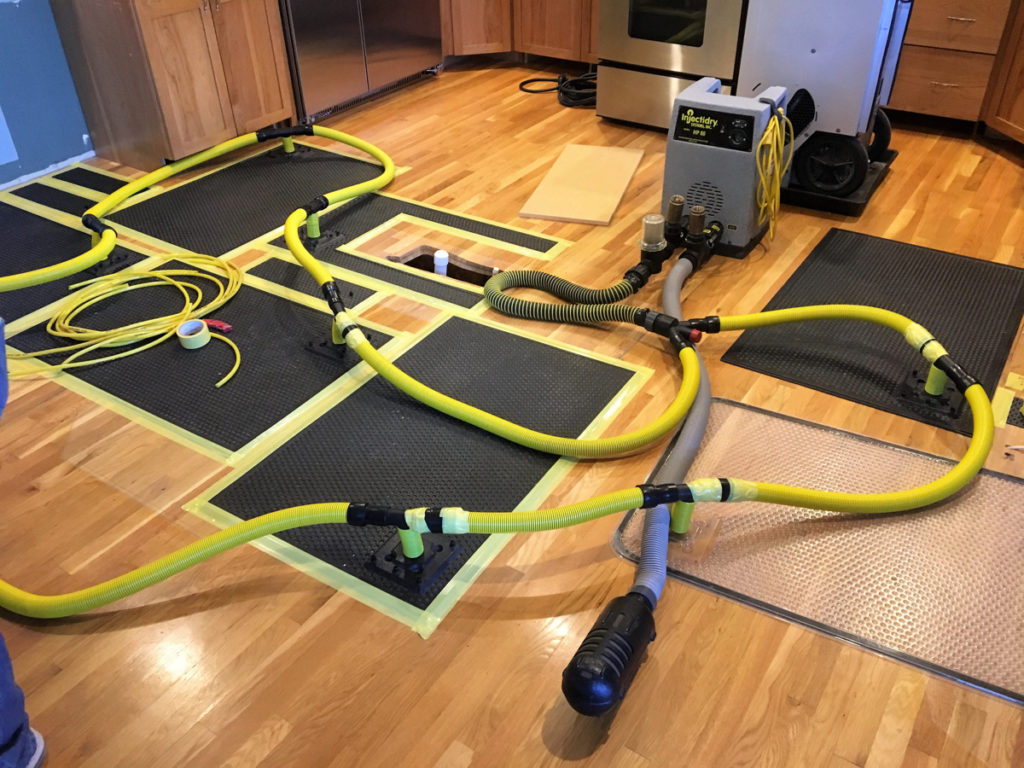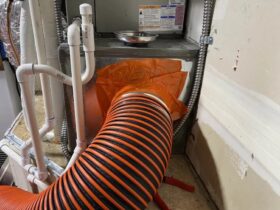Water damage wreaks havoc on a home or business if not addressed quickly and effectively. From flooded basements to burst pipes, water infiltrations ruin floorings, drywall, furnishings, and valuables if left unchecked. Thankfully, recent advances in drying technology are helping Orlando’s water damage restoration specialists tackle even the worst water catastrophes.
Structural drying techniques
In the past, water damage repair meant tearing out soaked drywall, floor coverings, and insulation to facilitate air drying, a lengthy and disruptive process. New structural drying techniques now utilize powerful drying machines to rapidly remove moisture from flooded structures and contents. Truck-mounted systems and portable air movers forcefully circulate air, gradually reducing relative humidity levels from saturation to desired thresholds for reconstruction. Strategic moisture monitoring ensures drying progresses at safe rates to prevent secondary water damage or mold growth. From wall cavities to carpet pads, this accelerated structural dehumidification often saves materials from removal and replacement.
Injected drying for inaccessible areas
Additionally, injected drying now provides a solution for moisture trapped in less accessible areas, such as inside furniture cavities or between double drywall layers. Using specialty nozzles, restoration technicians inject blasts of heated, extremely dry air directly into waterlogged materials. This active dehumidification facilitates evaporation even in cramped areas with limited ventilation. Workers also inject antimicrobial solutions during drying to inhibit bacteria or mold growth in damp spots difficult to scrub manually, like carpet or insulation between walls. These injection techniques are vital for addressing deep-seated moisture and avoiding secondary damage after serious flooding.
Particle drying removes deep-seated moisture
Particle drying is another recently developed technique using advanced materials to extract excess moisture missed by standard drying methods. It involves spreading thousands of micro-porous beads over wet surfaces like sub-flooring or drywall. The beads absorb ambient humidity and continue working to actively pull moisture from the deepest layers over one to three days. Particle drying draws 50-70% more water than conventional equipment alone while speeding up project timelines. It works well before the demolition of soaked materials or after structural drying to remove any lingering moisture. Adding particle drying to their arsenal helps technicians pursue the driest possible working conditions to prevent further water damage during repairs or new construction. Damage Control in Orlando assists you in resolving these issues.
Infrared thermal imaging detects hidden moisture
Infrared cameras are also improving restoration technicians’ ability to locate and monitor hidden moisture. Especially following serious flooding, unknown water saturation deep in walls, floors, or furnishings cause major issues later if unaddressed. Infrared imaging uses differences in materials’ thermal conductivity and capacity for identifying excess moisture non-invasively. Even in the drying phase, thermal indicators pinpoint spots failing to dry adequately so restoration crews know which areas require additional air circulation or drying techniques. Thermal scanning thereby minimizes the risk of reconstructing spaces prematurely or leaving trapped moisture that promotes mold growth. Continued moisture monitoring also validates when the structure returns to safe parameters for rebuilding.
Antimicrobial fogging inhibits bacterial growth
Applying antimicrobial solutions is now central to responsible drying practices as well. Preventing mold or bacteria growth requires controlling both residual moisture and microbial contamination. Fogging machinery diffuses aqueous ozone, hypochlorous acid, hydrogen peroxide, or other sporicidal agents into ambient air and directly on affected porous or semi-porous materials. Treatments penetrate deep into wall cavities, flooring, and furnishings to sanitize damp spots and contents. Their contact action continues working to inhibit biocontamination during the entire restoration timeline. Fogging upgrades, the safety of structural and content drying while limiting associated health risks, especially for flooding disasters. It provides vital protection following catastrophic water damage.











